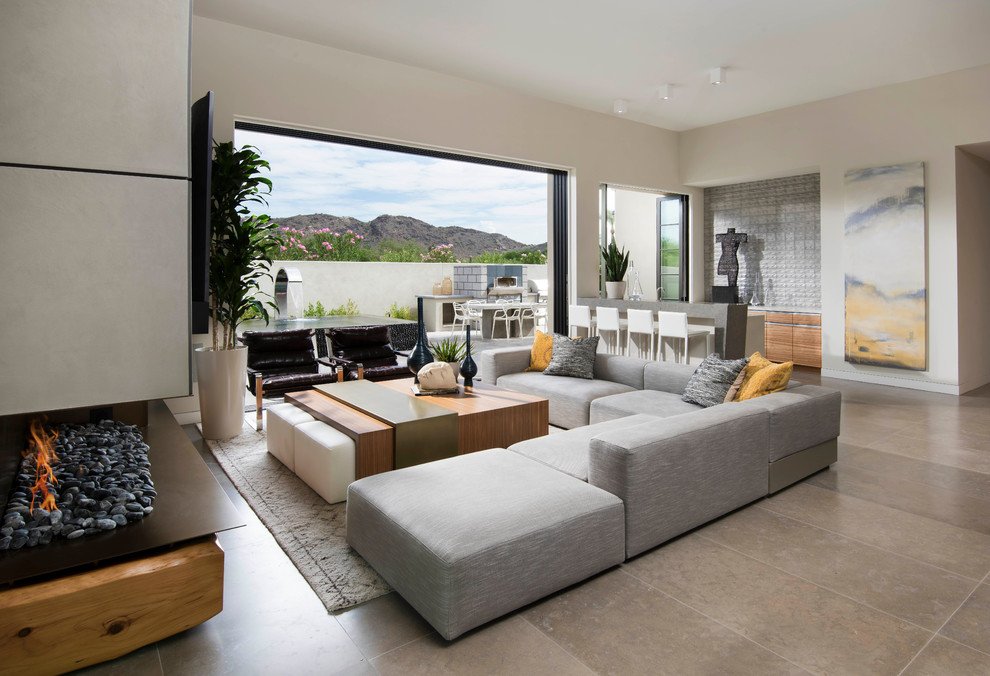Published: [Date] | Category: Home Design – Living Room
Your living room is the heart of your home – it’s where families gather, guests are entertained, and memories are made. Whether you’re starting from scratch or looking to refresh your current space, creating a beautiful and functional living room doesn’t have to be overwhelming. Here are 10 essential design tips that will transform your living room into a stunning retreat.
1. Start with a Focal Point
Every great living room needs a focal point that draws the eye and anchors the space. This could be a statement fireplace, a large piece of artwork, an accent wall, or even a stunning view from your window.
Pro Tip: If your room lacks a natural focal point, create one with a bold piece of art, a gallery wall, or a beautiful media console.
[Image suggestion: A well-designed living room with a clear focal point – perhaps a fireplace with artwork above it or a statement wall]
2. Choose the Right Furniture Layout
The layout of your furniture can make or break your living room’s functionality. Consider the room’s traffic flow and how people will move through the space.
Popular Layout Options:
- L-shaped arrangement: Perfect for corner spaces and creating intimate conversation areas
- U-shaped setup: Ideal for larger rooms and entertaining
- Floating furniture: Pull pieces away from walls to create a more dynamic, spacious feel
[Image suggestion: Before and after shots of different furniture arrangements, or a top-view diagram showing optimal furniture placement]
3. Layer Your Lighting
Good lighting is crucial for creating ambiance and functionality. Aim for three types of lighting:
- Ambient lighting: Overall room illumination (ceiling fixtures, recessed lights)
- Task lighting: Focused light for reading or activities (table lamps, floor lamps)
- Accent lighting: Decorative lighting that adds mood (wall sconces, candles, string lights)
[Image suggestion: A living room showcasing multiple lighting sources – overhead lighting, table lamps, and accent lighting working together]
4. Create a Cohesive Color Palette
Choose a color scheme that flows throughout your living room. The 60-30-10 rule works well:
- 60% dominant color (walls, large furniture)
- 30% secondary color (upholstery, curtains)
- 10% accent color (pillows, accessories, artwork)
Trending Color Combinations:
- Warm neutrals with sage green accents
- Navy blue with brass and cream
- Earthy terracotta with soft whites
[Image suggestion: A living room demonstrating the 60-30-10 color rule, or a mood board showing coordinating colors and materials]
5. Add Texture and Pattern
Texture and pattern add visual interest and depth to your living room. Mix different materials and patterns to create a layered, sophisticated look.
Ways to Add Texture:
- Throw pillows and blankets in various fabrics
- Area rugs with interesting weaves
- Natural materials like wood, stone, or woven baskets
- Mixed metal finishes
[Image suggestion: Close-up shots of textured fabrics, pillows, and accessories, or a room showing successful mixing of patterns and textures]
6. Don’t Forget the Area Rug
An area rug can define your seating area, add warmth, and tie your color scheme together. Make sure it’s large enough – ideally, front legs of your furniture should sit on the rug.
Size Guidelines:
- Small room: 5′ x 8′ or 6′ x 9′
- Medium room: 8′ x 10′
- Large room: 9′ x 12′ or larger
[Image suggestion: Examples of properly sized rugs in different living room layouts]
7. Incorporate Personal Style
Your living room should reflect your personality and lifestyle. Display items that tell your story:
- Family photos in beautiful frames
- Travel souvenirs and collected treasures
- Books that showcase your interests
- Plants that bring life and color
[Image suggestion: A personalized living room with family photos, books, plants, and personal collections displayed tastefully]
8. Maximize Storage Solutions
Keep your living room clutter-free with smart storage solutions:
- Ottoman with hidden storage
- Built-in shelving or bookcases
- Stylish baskets for remote controls and magazines
- Console tables with drawers
[Image suggestion: Clever storage solutions in action – ottomans, built-ins, or attractive baskets used for organization]
9. Bring in Natural Elements
Adding natural elements creates a calming, organic feel:
- Indoor plants (snake plants, fiddle leaf figs, pothos)
- Natural wood furniture or accents
- Stone or marble accessories
- Fresh flowers or dried botanicals
[Image suggestion: A living room with various plants, natural wood elements, and organic textures]
10. Scale and Proportion Matter
Ensure your furniture and accessories are appropriately sized for your space:
- Avoid tiny furniture in large rooms (it will look lost)
- Don’t overcrowd small spaces with oversized pieces
- Vary heights of furniture and accessories for visual interest
- Leave enough space for comfortable movement
[Image suggestion: Two rooms showing good vs. poor scale and proportion, or a single room demonstrating proper scaling]
Final Thoughts
Creating a beautiful living room is about finding the perfect balance between style and function. Remember, the best designs evolve over time, so don’t feel pressured to get everything perfect immediately. Start with these fundamentals, and gradually add personal touches that make the space uniquely yours.
Ready to start your living room transformation? Begin with one or two of these tips and build from there. Your dream living room is just a few thoughtful design decisions away!
What’s your biggest living room design challenge? Share your thoughts in the comments below, and don’t forget to subscribe to our newsletter for more home design inspiration!

Leave a Reply